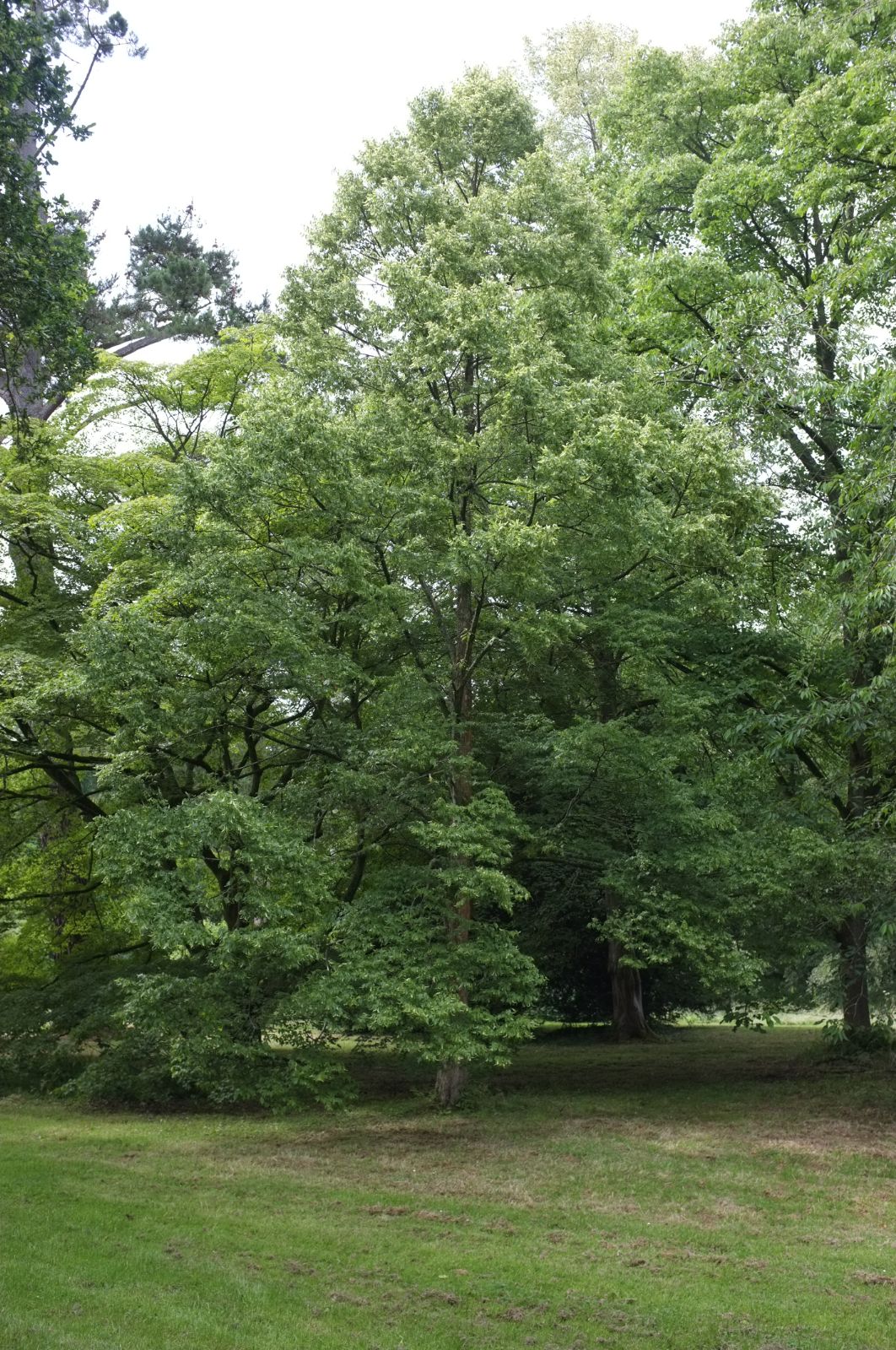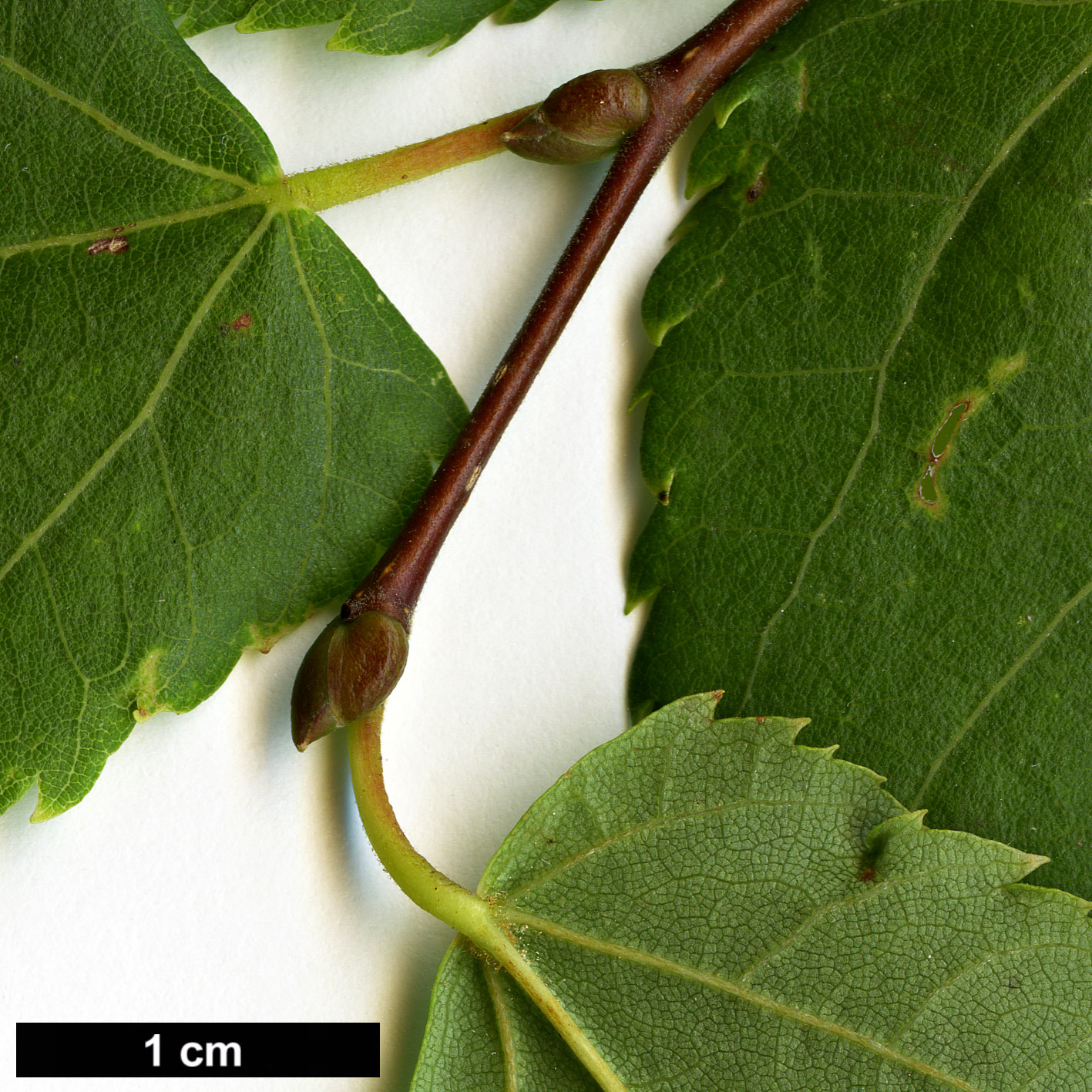Tilia kiusiana
Sponsor
Kindly sponsored by
a member of the International Dendrology Society
Credits
Owen Johnson & Julian Sutton (2020)
Recommended citation
Johnson, O. & Sutton, J. (2020), 'Tilia kiusiana' from the website Trees and Shrubs Online (treesandshrubsonline.
Genus
Other taxa in genus
- Tilia americana
- Tilia amurensis
- Tilia callidonta
- Tilia chinensis
- Tilia chingiana
- Tilia concinna
- Tilia cordata
- Tilia dasystyla
- Tilia endochrysea
- Tilia × euchlora
- Tilia × europaea
- Tilia × flaccida
- Tilia × flavescens
- Tilia Hanwell Hybrids
- Tilia 'Harold Hillier'
- Tilia 'Harvest Gold'
- Tilia × haynaldiana
- Tilia henryana
- Tilia japonica
- Tilia × juranyana
- Tilia mandshurica
- Tilia maximowicziana
- Tilia miqueliana
- Tilia mongolica
- Tilia nobilis
- Tilia × noziricola
- Tilia oliveri
- Tilia paucicostata
- Tilia platyphyllos
- Tilia tomentosa
- Tilia tuan
- Tilia 'Westonbirt Dainty'
A slender tree to 24 m, dbh 30 cm. Bark grey-brown, developing ridges which flake in thin scales. Twigs slender (1–2 mm thick), becoming glabrous. Buds with 3 scales exposed, glabrous, often shining red. Leaves with short stalks (5–14 mm); narrowly ovate, 4.5–5.7 cm × 2–3.5 cm; base obliquely truncate, tip long-pointed; underside sparsely hairy or glabrous except for axillary tufts; marginal teeth small, without mucronate tips. Floral bract 3–7.5 × 0.6–1.2 cm, almost glabrous. Inflorescences drooping, with 9–31 small flowers in compact cymes. Staminodes present. Fruit small (5 mm), almost spherical, with a fragile wall covered in very short tomentum (Pigott 2012).
Distribution Japan Kyushu and far SW Honshu
Habitat Mountain forests
USDA Hardiness Zone 7
RHS Hardiness Rating H5
Conservation status Least concern (LC)
Tilia kiusiana, a member of Section Anastraea, is distinct in its small, narrow, short-stalked leaves, making it one of very few members of the genus that is not always immediately recognisable as a lime. While many other East Asian limes described in the 19th century were named by European botanists from the specimens of European collectors, T. kiusiana was described in 1896 by Tokyo botanist Tomitaro Makino (‘the father of Japanese botany’) and his colleague Yasuyoshi Shirasawa.
Although it is confined in the wild to the almost subtropical climate of the far south and west of Japan, it grows happily if rather slowly in collections in the milder parts of Europe. It was introduced to Britain in the 1930s (Bean 1981), but today’s known trees are much younger. The very dainty foliage tends to encourage an assumption that the whole tree will remain proportionately diminutive: Hillier & Coombes (2002) even describe T. kiusiana as ‘a small shrub’. However, some younger introductions to Britain are now growing quite freely; the tallest and most handsome, on the north side of Pool Avenue in the Westonbirt National Arboretum, was 14 m, dbh 30 cm in 2014, with a straight bole, while a younger tree in the National Collection at Peasmarsh Place in East Sussex was 10 m, dbh 24 cm in 2018, 25 years from planting (Tree Register 2018).
Beyond Britain, there is an old (probably 20th century) specimen, which sets fertile seed at the Arboretum des Barres in France’s Loire Valley (Pigott 2012). Younger trees are present in several Belgian collections, including one from 1989 in the Arboretum Bokrijk (Plantcol 2020), and at the University Botanical Garden, Bonn, Germany (Botanische Gärten der Universität Bonn 2020).
Although undoubtedly rare in North American collections, it will grow on both seaboards. In the West, it is recorded from both Seattle, Washington and Berkeley, California (University of Washington Botanic Gardens 2020; University of California Botanical Garden 2020). In the East there is a tree at the Arnold Arboretum, Massachusetts, obtained from Japanese cultivation in 1986 (18 cm dbh, 2018 – Arnold Arboretum 2020). A specimen planted at the JC Raulston Arboretum, North Carolina in 2007 was only 60 cm tall and apparently shrubby after five years (JC Raulston Arboretum 2020). It is unlikely to thrive in more continental areas; significantly it is not recorded from the Morton Arboretum, Illinois, which has a very good Tilia collection (Morton Arboretum 2020).



